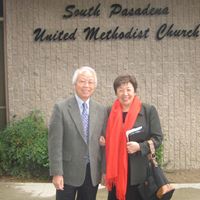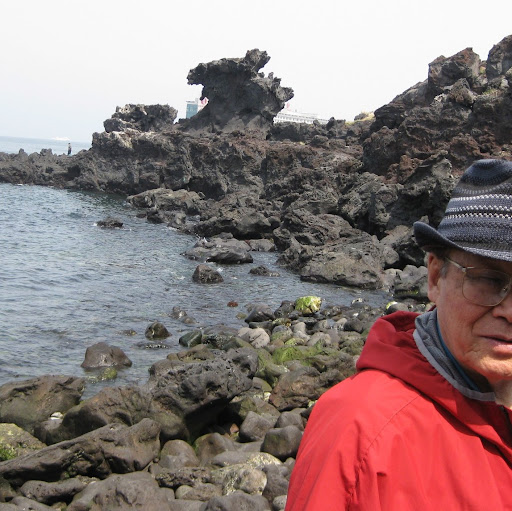Young H Chung
age ~71
from Los Angeles, CA
- Also known as:
-
- Young Hee Chung
- Young L Chung
- Young S Chung
- Young H Bae
- Younghee Chung
- Young Hchung
- Chung Paul Young
- Hee Chung Young
- Kum Chung Young
- Phone and address:
- 341 S Kenmore Ave APT 308, Los Angeles, CA 90020
Young Chung Phones & Addresses
- 341 S Kenmore Ave APT 308, Los Angeles, CA 90020
Medicine Doctors

Dr. Young K Chung, Panorama City CA - MD (Doctor of Medicine)
view sourceSpecialties:
Child & Adolescent Psychiatry
Address:
13652 Cantara St, Panorama City, CA 91402
(818)3752000 (Phone)
KAISER PARMANENTE
18040 Sherman Way, Reseda, CA 91335
(818)7581200 (Phone), (818)7581357 (Fax)
(818)3752000 (Phone)
KAISER PARMANENTE
18040 Sherman Way, Reseda, CA 91335
(818)7581200 (Phone), (818)7581357 (Fax)
Certifications:
Child & Adolescent Psychiatry, 2001
Psychiatry, 1981
Psychiatry, 1981
Awards:
Healthgrades Honor Roll
Languages:
English
Education:
Medical School
Yonsei University / College of Medicine
Yonsei University / College of Medicine

Young Oh Chung, Beverly Hills CA
view sourceSpecialties:
Acupuncture
Address:
150 N Almont Dr Suite 101, Beverly Hills, CA 90211
(310)4242991 (Fax)
(310)4242991 (Fax)
Languages:
English

Young K Chung, Panorama City CA
view sourceSpecialties:
Psychiatrist
Address:
13652 Cantara St, Panorama City, CA 91402
Education:
Doctor of Medicine
Board certifications:
American Board of Psychiatry and Neurology Certification in Psychiatry (Psychiatry and Neurology)
Real Estate Brokers

Young Chung, Los Angeles CA
view sourceSpecialties:
Buyer's Agent
Listing Agent
Listing Agent
Work:
Hallmark Realty
3440 Wilshire Blvd Suite 920, Los Angeles, CA 90010
(213)3873508 (Office)
3440 Wilshire Blvd Suite 920, Los Angeles, CA 90010
(213)3873508 (Office)
Vehicle Records
-
Young Chung
view source -
Address:750 Crenshaw Blvd APT 106, Los Angeles, CA 90005
-
VIN:JHMGE886X9S049939
-
Make:HONDA
-
Model:FIT
-
Year:2009
Name / Title
Company / Classification
Phones & Addresses
Owner
Ace Tinting & Glass
Auto Service - Window Tinting. Glass - Plate and Window. Store Fronts. Auto Repair - Windshield. Glass Shops
Auto Service - Window Tinting. Glass - Plate and Window. Store Fronts. Auto Repair - Windshield. Glass Shops
2341 Royal Ln, A-1, Dallas, TX 75229
(972)4888468, (972)4068286
(972)4888468, (972)4068286
President
Son Green Investment, Inc
3731 Wilshire Blvd, Los Angeles, CA 90010
President
Minsung Ht Corp
Summerwood Dr, Fullerton, CA 92833
Owner
Submarine Express
Eating Place
Eating Place
344 W Huntington Dr, Monrovia, CA 91016
(626)3571144
(626)3571144
President
Ck Hospitality, Inc
Nonclassifiable Establishments
Nonclassifiable Establishments
3807 Wilshire Blvd, Los Angeles, CA 90010
President
Beautiful Day Bridal Salon
158 S Western Ave, Los Angeles, CA 90004
Owner
Young C Chung CPA
Accounting/Auditing/Bookkeeping Tax Return Preparation Services
Accounting/Auditing/Bookkeeping Tax Return Preparation Services
3440 Wilshire Blvd, Los Angeles, CA 90010
(213)3873508
(213)3873508
President
Ffg, Inc
1255 Olson Dr, Fullerton, CA 92833
License Records
Young Bin Chung
License #:
1210006063
Category:
Nail Technician Temporary Permit
Isbn (Books And Publications)




Art of Oriental Embroidery: History, Aesthetics, and Techniques
view sourceAuthor
Young Yang Chung
ISBN #
0684180405

Silken Threads: A History Of Embroidery In China, Korea, Japan, And Vietnam
view sourceAuthor
Young Yang Chung
ISBN #
0810943301

Painting With a Needle: Learning the Art of Silk Embroidery With Young Yang Chung
view sourceAuthor
Young Yang Chung
ISBN #
0810945703

Painting With a Needle: Learning the Art of Silk Embroidery With Young Yang Chung
view sourceAuthor
Young Yang Chung
ISBN #
0810992531
Lawyers & Attorneys

Young Bin Chung, Buena Park CA - Lawyer
view sourceAddress:
5463 Mead Dr, Buena Park, CA 90621
Licenses:
California - Active 2007
Education:
Indiana University School of Law, Bloomington
University of California - Berkeley
University of California - Berkeley

Young Bin Chung, Buena Park CA - Lawyer
view sourceAddress:
4763 Guadalajara Way, Buena Park, CA 90621
Experience:
18 years
Jurisdiction:
California (2007)
Law School:
Indiana Univ Bloomington School of Law
Education:
Univ of California Berkeley, Undergraduate Degree
Indiana Univ Bloomington School of Law, Law Degree
Indiana Univ Bloomington School of Law, Law Degree
Memberships:
California State Bar (2007)
Wikipedia References

Young Yang Chung
Us Patents
-
Film
view source -
US Patent:6599443, Jul 29, 2003
-
Filed:Aug 31, 2000
-
Appl. No.:09/652553
-
Inventors:Nicholas Sharples - Dorset, GB
Gabrielle Egan - Dorset, GB
Young Chung - Calabasas CA
Zhiming Zhuang - Thousand Oaks CA
Zili Li - Barrington IL
Bruce K. Winker - Thousand Oaks CA
Jane H. Hanamoto - Thousand Oaks CA
David Coates - Dorest, GB -
Assignee:Rockwell Technologies, LLC - Thousand Oaks CA
Merck Patent GmbH - Darmstadt -
International Classification:C09K 1930
-
US Classification:25229963, 428 1
-
Abstract:The invention relates to an optical retardation film comprising a layer of an anisotropic polymer material with an optical axis substantially parallel to the plane of the layer. The invention furthermore relates to a process of preparing the optical retardation film, to the use of such an optical retardation film in liquid crystal displays, and to a liquid crystal display device comprising a liquid crystal cell and such an optical retardation film.
-
Polymide-Free Alignment Layer For Lcd Fabrication And Method
view source -
US Patent:6841654, Jan 11, 2005
-
Filed:May 15, 2001
-
Appl. No.:09/855921
-
Inventors:Young Chung - Calabasas CA, US
Len Hale - Newbury Park CA, US -
Assignee:Rockwell Scientific Licensing, LLC - Thousand Oaks CA
-
International Classification:C08G 6502
-
US Classification:528393, 428 11, 428 14, 428 16, 430 20, 528366, 522141, 522142, 522170
-
Abstract:An inexpensive polyimide-free alignment layer comprising a mixture of an epoxy and a reactive liquid crystal material is used for fabricating liquid crystal displays (LCDs). The alignment layer can be cast onto a previously aligned layer, without destroying the alignment of the underlying layer, thus allowing for monolithic fabrication of compensator stacks, without film transfer lamination.
-
Nano-Structured Inorganic Zinc Phosphate Corrosion Protective Coating For Metal Alloys
view source -
US Patent:7579049, Aug 25, 2009
-
Filed:Jul 6, 2004
-
Appl. No.:10/885197
-
Inventors:Young J. Chung - Calabasas CA, US
Melitta M. Hon - Daly City CA, US
Martin W. Kendig - Thousand Oaks CA, US -
Assignee:The Boeing Company - Chicago IL
-
International Classification:B05D 7/14
C07F 7/18
C09D 183/04 -
US Classification:427409, 4274192, 4274198
-
Abstract:A method is provided for enhancing corrosion resistance of a metal surface that includes the step of forming a sol-gel coating in which nanostructured zinc phosphate (Zn(PO)) and zinc oxide (ZnO) phases are present in the mixture. The method may include the steps of mixing an organosilane, organometallic, organic acid, water, and alcohol, and allowing the components of the mixture to partially hydrolyze, followed by adding at least one component having zinc functionality and at least one component having phosphate functionality to the partially hydrolyzed mixture, wherein the zinc component and phosphate component are added in a molar ratio of from about 1. 5:1 to about 5:1 (Zn:PO). The resulting mixture can be applied as a coating to a metal surface to improve the corrosion resistance of the metal and to enhance the adhesion of resinous materials to the metal surface.
-
Laminated Structures Using Uv-Curable Adhesion Promoters
view source -
US Patent:8310632, Nov 13, 2012
-
Filed:May 4, 2010
-
Appl. No.:12/799972
-
Inventors:Young J. Chung - Calabasas CA, US
-
Assignee:Teledyne Scientific & Imaging, LLC - Thousand Oaks CA
-
International Classification:G02F 1/1335
-
US Classification:349117, 349118, 349119, 349122, 349123, 349127, 428412, 528310, 528393
-
Abstract:An adhesion promoter for enhancing the bond between adjacent layers of a multilayer structure to prevent delamination thereof is disclosed. The adhesion promoter comprises an aromatic polyimide-based UV-cured acrylate. Also disclosed are laminated structures including liquid crystal displays and bonded missile domes that utilize an adhesion promoter of the invention, and methods for fabricating such structures.
-
Uv-Curable Adhesion Promoter, Laminated Structures Using Same And Methods For Fabricating Such Laminated Structures
view source -
US Patent:20070077372, Apr 5, 2007
-
Filed:Jun 29, 2006
-
Appl. No.:11/478957
-
Inventors:Young Chung - Calabasas CA, US
-
International Classification:C09K 19/00
-
US Classification:428001500, 525178000
-
Abstract:An adhesion promoter for enhancing the bond between adjacent layers of a multilayer structure to prevent delamination thereof is disclosed. The adhesion promoter comprises an aromatic polyimide-based UV-cured acrylate. Also disclosed are laminated structures including liquid crystal displays and bonded missile domes that utilize an adhesion promoter of the invention, and methods for fabricating such structures.
-
Use Of Aluminosilicate Sol-Gel Materials As A Phosphor Carrier In The Fabrication Of Fluorescent Lamps
view source -
US Patent:58084070, Sep 15, 1998
-
Filed:Sep 7, 1995
-
Appl. No.:8/525429
-
Inventors:Young Chung - Calabasas CA
Thomas A. Seder - Cedar Rapids IA -
Assignee:Rockwell International - Costa Mesa CA
-
International Classification:H01J 6135
-
US Classification:313485
-
Abstract:An improved fluorescent lamp and a method of preparing the same are described. The fluorescent lamp includes a tube having a first surface which serves as a substrate. A continuous layer of aluminosilicate sol-gel material having phosphor particles embedded therein is formed on the first surface of the tube. The continuous layer of sol-gel material having phosphor particles embedded therein is formed by first preparing an aluminosilicate sol-gel solution. The phosphor particles are next mixed in the aluminosilicate sol-gel solution to obtain a phosphor particle carrying aluminosilicate sol-gel solution. Then, the first surface is coated with the phosphor particle carrying aluminosilicate sol-gel solution. The phosphor particle carrying aluminosilicate sol-gel solution is dried on the first surface to form a phosphor particle containing sol-gel layer.
-
Polymers Made With Metal Oxide Sols
view source -
US Patent:59626089, Oct 5, 1999
-
Filed:Feb 13, 1998
-
Appl. No.:9/023175
-
Inventors:Hong-Son Ryang - Camirillo CA
Young Jin Chung - Calabasas CA
Joseph T. Snyder - Chesterland OH
An-Min Jason Sung - Morris Plains NY -
Assignee:Reliance Electric Industrial Co. - Cleveland OH
-
International Classification:C08F 406
C08F 442 -
US Classification:526 89
-
Abstract:In one embodiment, the present invention relates to a polymer prepared from a mixture containing a polymerization material and a polycondensation product of a partially hydrolyzed chelated metal oxide precursor. In another embodiment, the present invention relates to a process for making a polymer involving contacting a polymerization material with a metal oxide sol comprising a liquid and a polycondensation product of a partially hydrolyzed chelated metal oxide precursor to form a mixture and at least one of polymerizing and curing the mixture of the polymerization material and the polycondensation product.
-
Method Of Preparing Organically Modified Aluminosilcates Sol-Gel Films
view source -
US Patent:57502030, May 12, 1998
-
Filed:Sep 7, 1995
-
Appl. No.:8/524978
-
Inventors:Young Chung - Calabasas CA
-
Assignee:Rockwell International Corp. - Seal Beach CA
-
International Classification:B05D 302
-
US Classification:427380
-
Abstract:An organically modified sol-gel method of preparing substantially crack-free aluminosilicates films is provided. Chelated aluminum alkoxide and polydimethylsiloxane are mixed in a 1:1 ratio by weight in a solvent and refluxed at approximately the boiling temperature of the solvent to produce a sol-gel liquid including polymerized aluminosilicates. The sol-gel liquid is cooled to room temperature. Additional solvent is added to the sol-gel liquid to reduce its viscosity. A substrate is coated with the reduced viscosity sol-gel liquid. The coating of sol-gel liquid on the substrate is dried to produce an organically modified aluminosilicates sol-gel film. The sol-gel film is heated, to enhance polymerization of the sol-gel film and to evaporate residual solvent, and then cooled.

Chang Young Chung ()
view source
Young Hwan Chung
view source
Hye Young Chung
view source
Young Sui Chung
view source
Young Tae Chung
view source
Young Gil Chung
view source
Ho Young Chung
view source
So Young Chung
view sourceMyspace
Youtube
Flickr
Classmates

Young Chung
view sourceSchools:
Cushing Academy Ashburnham MA 2000-2004
Community:
Rick Trimpi, Joan Sherman, Bob Crossley, Jeffrey James

Young jin Chung
view sourceSchools:
John Muir Junior High School Burbank CA 1999-2003
Community:
Tom Evans, Linda Holtz, Mary White

Young Chung
view sourceSchools:
Pope High School Marietta GA 2006-2010

Hye Young Chung | Frontie...
view source
Na Young Chung | D.C. Bea...
view source
Hyun Young Chung | Univer...
view source
Young Chung, Teaneck High...
view source
Mi Young Chung | Von Steu...
view sourcePlaxo

young chung
view sourceProject Manager at Wiginton Hooker Jeffry Architec...

Young Chung
view source
young clara chung
view sourceNuskin Enterprises
Googleplus

Young Chung

Young Chung

Young Chung

Young Chung

Young Chung

Young Chung

Young Chung

Young Chung
Get Report for Young H Chung from Los Angeles, CA, age ~71





![[FIFA10]LEE CHUNG YOUNG(WITH FIFA10 OST Nneka - Ka... [FIFA10]LEE CHUNG YOUNG(WITH FIFA10 OST Nneka - Ka...](https://i.ytimg.com/vi/InpJqSmN8ew/0.jpg)











